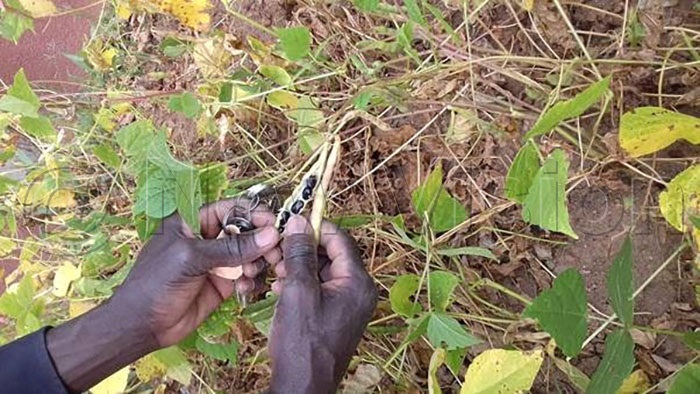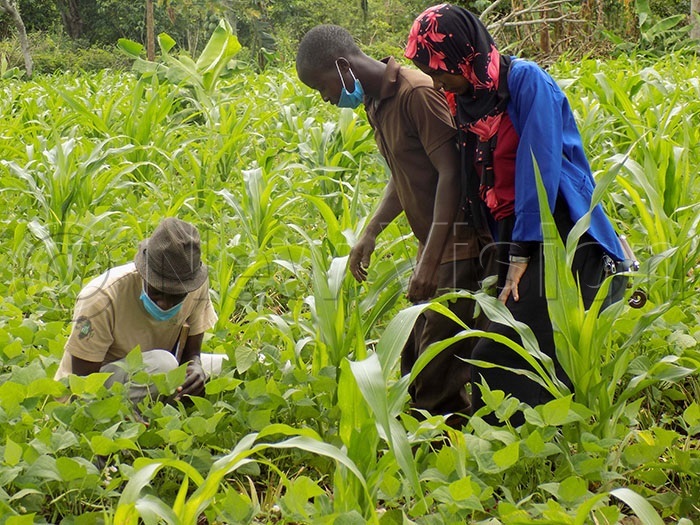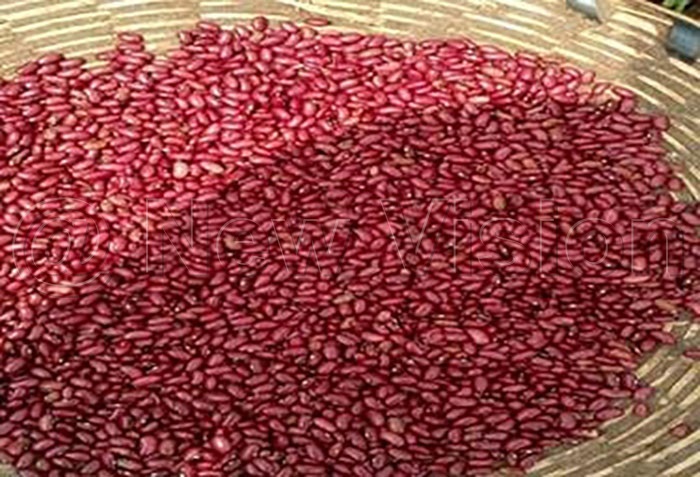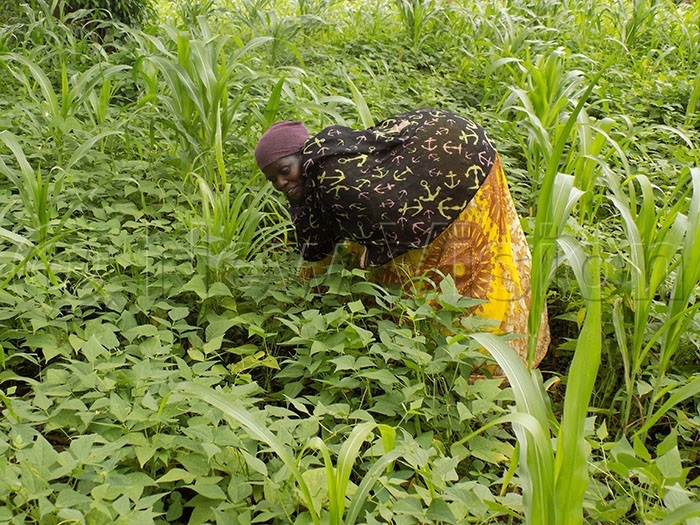Eastern and northern farmers get drought-tolerant beans
Munya who pays school fees for her eight children using proceeds from beans is faced with challenges of climate change.
FARMING|AGRIBUSINESS|BEANS
43-year-old Afua Munya from Mataba village in Kayunga district grows beans as a source of income.
She uses earnings from beans to pay school fees for her children and keeps some for domestic use. According to Munya, every mother should have beans in-store from season to season to sustain the family.
Munya who pays school fees for her eight children using proceeds from beans is faced with challenges of climate change such as prolonged drought affecting the production of beans, other encounters due to pests and diseases and fluctuating prices.
She explains that drought sets in usually when the beans are at the flowering stage.
"When that happens, all flowers on the bean plant fall off preventing pod formation, if lucky, some beans tend to flower as soon as the rains set in but the harvest is not usually good," she says.
Despite the challenges, Munya is determined to continue growing beans because of its many benefits.

She says that they are a source of income, food security crops, when cooked, they generate thick soup that adds nitrogen to the soil which supports the growth of other crops like bananas and coffee and she plans to intercrop in the next season.
That is why when she had an opportunity of visiting a demonstration garden, established by Partnerships for Seed Technology Transfer in Africa (PASTTA) project to showcase to farmers the latest bean varieties, she had to join.
"When I visited the demo plot with other farmers, the project officials told us the beans were drought tolerant, high yielding but also mature early. I witnessed by counting the pods, which were 30 in number, besides, they were attractive and I requested for the seed, I choose the red (NAROBEAN 6) which I have planted in these three-quarters of an acre," Munya adds.
From this particular piece of land, Munya hopes to harvest 400 kilograms although she was expecting 600 kilograms, the crop was hit by drought at the flowering stage.
While Munya hopes to harvest 400kilograms, her colleague, Edward Kirabira hopes to harvest between 1 and 2 bags of beans, from a smaller piece of land where he planted ten kilos of seed.

He however believes that in the other three acres, he will harvest more, but only hopes AATF and PASTTA project can help him secure market for especially the new red beans.
"They have been buying Nambaale from us at shs2500 sometimes shs3000 but some places, a kilo of the same beans goes for between sh4000 to sh5000," said Kirabira.
Kirabira who joined farming eight years ago has been into papaws, pineapples, tomatoes and less attention to beans.
"But after observing Munya for sometimes, how she grows beans every season and keeps earning, I was encouraged and since Arnold Mbowa (PASTTA project officer) conducted a demo garden in our village, I now know that from beans, one can still earn just like any other crop," explains Kirabira.
Why interested in the red beans?

The two are among the many farmers in Central, Eastern and Northern Uganda who have accessed drought-tolerant red and black beans. The beans were bred by researchers from NARO's National Crop Research Resources Institute (NaCRRI) with support from AATF, Bio-diversity international, CIAT, PABBRA, AVISA, USAID.
These are being promoted through the PASTTA, which aims at taking improved technologies to farmers to increase adoption.
According to Arnold Mbowa, the PASTTA project officer at AATF, the beans are promoted among women and youth for various reasons.
For the women, the beans are a good source of food while youth prefer projects that have quicker returns in terms of cash.

"Women first think of the family, so they grow crops that will first cater for family needs before considering markets while the youth want an investment that has quick returns and beans mature within two and half months, so more youth are getting on board," he said.
According to the head of the bean research program at the National Agriculture Research Organization (NARO), Dr Stanley Nkalubo, the beans include NARO bean 6 which is red in color, drought-tolerant and small-seeded and can yield up to 3800 kg per hectare.
At the flowering stage, they present white flowers. They are also rich in minerals such as iron, measuring 72 parts per million (ppm) and zinc measuring 34parts per million (ppm).
It matures within 68-72 days and can be grown in almost all parts of the country. In addition, the red beans are tolerant to anthracnose, BCMV, ALS, Rust and most of the other diseases
NAROBEAN7 are small-seeded but black in color and drought tolerant. At the flowering stage, these usually have purple flowers. The potential yield is 3500kgs per hectare, and maturity is between 68-73 days.
In terms of the nutrient content, they too have an iron at 76 parts per million (pmm) and zinc at 35 parts per million (ppm). Just like the red beans, these too can grow well in low-mid altitude areas but are more on-demand in the Northern parts of the country.

They are also tolerant of anthracnose, BCMV, Rust ALS, and most of the other diseases.
To further spread out the beans in times of the changing climate, researchers are now working with individual farmers, farmer groups, youths to appreciate the technologies, multiply them and later become suppliers to other farmers within their localities, added researchers.